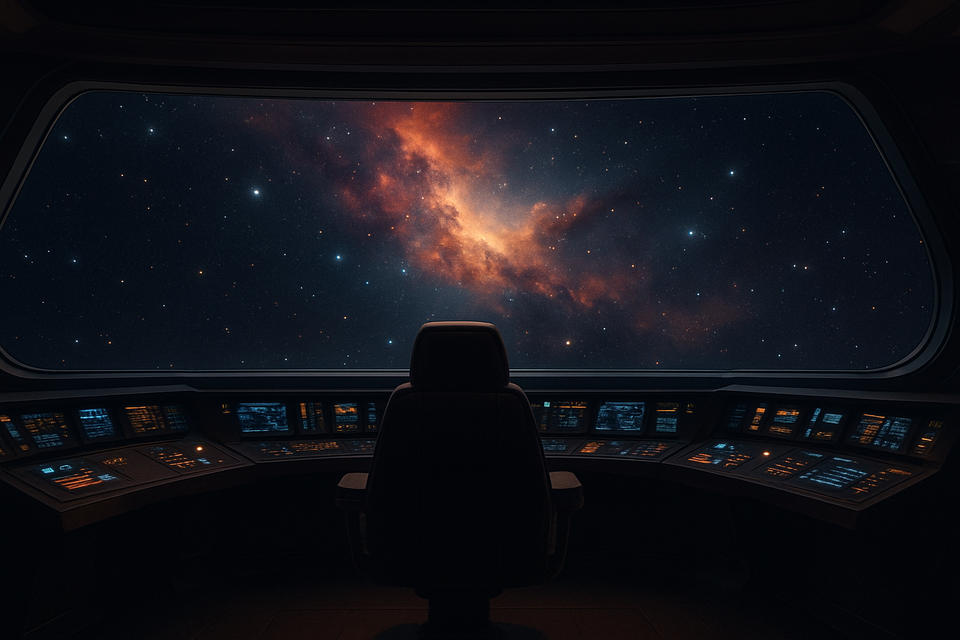We Lost Our Ability to Dream

And God knows we once had dreamers.
The iPad you hold in your hands exists in part because Alan Kay once conceived the Dynabook, a personal, portable medium for learning and creation, and because Gene Roddenberry, through Star Trek: The Next Generation, presented a cultural blueprint where technology amplified humanity’s curiosity and agency.
The “Mother of All Demos”, run by Douglas Engelbart (and now widely available to watch on YouTube) in 1968, was not merely a parade of inventions, but a map to a richer, more humane future. In a packed conference room, Engelbart sat before a keyboard and screen, calmly showing a world no one had imagined could exist. Back then, people were dreaming the future out loud.
We simply had to build it ... and we did not dream much more.
The Golden Age of Dreaming
In those early decades, we had technologists who dared to think in centuries rather than quarters. Engelbart’s demo did not simply unveil the mouse, hypertext, or real-time collaboration. It showcased a philosophy of human augmentation. Kay’s Dynabook concept imagined children using portable computers to compose music, explore mathematics, and write interactive stories, decades before such devices existed.
Roddenberry’s vision in Star Trek embedded values of exploration, cultural respect, and collective betterment into the very fabric of technological progress.
These were not dreams about convenience. They were dreams about expanding the human mind and fostering agency. The LISP machine, for instance, allowed newcomers to personalise and grow their own environments with autonomy and depth. A far cry from today’s sealed ecosystems.
From Vision to Retreat
Yet somewhere along the way, the long view gave way to the quarterly target. We traded open architectures for closed platforms, and creative empowerment for consumer passivity. The AI winters drained ambition and discouraged risk. The radical promise that “the network is the computer” was reduced to a marketing phrase for commoditised cloud services. We recycled old models, scaled them, and called it progress. It was not progress, but retreat dressed as innovation.
Trivialising Our Power
A modern mobile phone has more processing capacity than the systems that sent rockets to the Moon, yet it is mostly used to hurl cartoon birds at cartoon pigs. This is not an argument against leisure. Rather an observation that we have collectively normalised the trivialisation of extraordinary capabilities. We have turned tools for thought into vending machines for distraction.
Forces Against Dreaming
Why did we stop dreaming? Partly because dreaming is dangerous to established power structures.
True vision threatens comfortable incumbents.
The market rewards iteration over reinvention, and governance structures in technology companies have become dominated by risk-averse priorities. Our education systems often produce competent implementers rather than bold visionaries. We have engineered a world in which mediocrity feels safe.
The Fork in the Road
Artificial intelligence arrives as a force multiplier. It will make the incurious more complacent and the curious more capable. The dividing line will not be access to tools, but the willingness to dream with them. AI can be the engine for a renaissance in personal agency, or the machinery of mass intellectual sedation.
Imagine a future where every individual could tailor their digital environment as deeply as the pioneers once envisioned. Picture a student in a remote village with an AI partner that helps her design a sustainable irrigation system, or an artist conjuring immersive worlds from a single line of verse. Envision a society where technology restores the human as the central creative force, rather than the passive recipient of algorithmic content.
A Personal Choice to Dream
I choose to dream. I use my tablet like Iron Man’s interface, I speak to my favourite AI as a Starfleet science officer might address the ship’s computer (ideally it answers back with Majel Barrett’s iconic voice). I aggregate information, I explore ideas, because I want the future to be more than a quarterly report or the next viral application. If I can still hear that voice in my mind, I know I am on the bridge of my own future. I want the future we were promised, and more.
I want a future in which technology acts as a canvas for the imagination, not a cage for the mind.
A Call to Action
We must stop optimising for the next quarter’s KPIs and start building for the next century’s possibilities.
Forget the box. Forget thinking outside of it.
Remember that the point is to imagine something worth building, and then, unapologetically, build it. The dreamers of the past showed us what was possible. The tragedy is not that their visions were unrealistic, but that we have settled for so little. The opportunity, and the obligation, is to dream again, to dream bigger, and to decide whether we will be the architects of our future or merely its spectators.





Member discussion